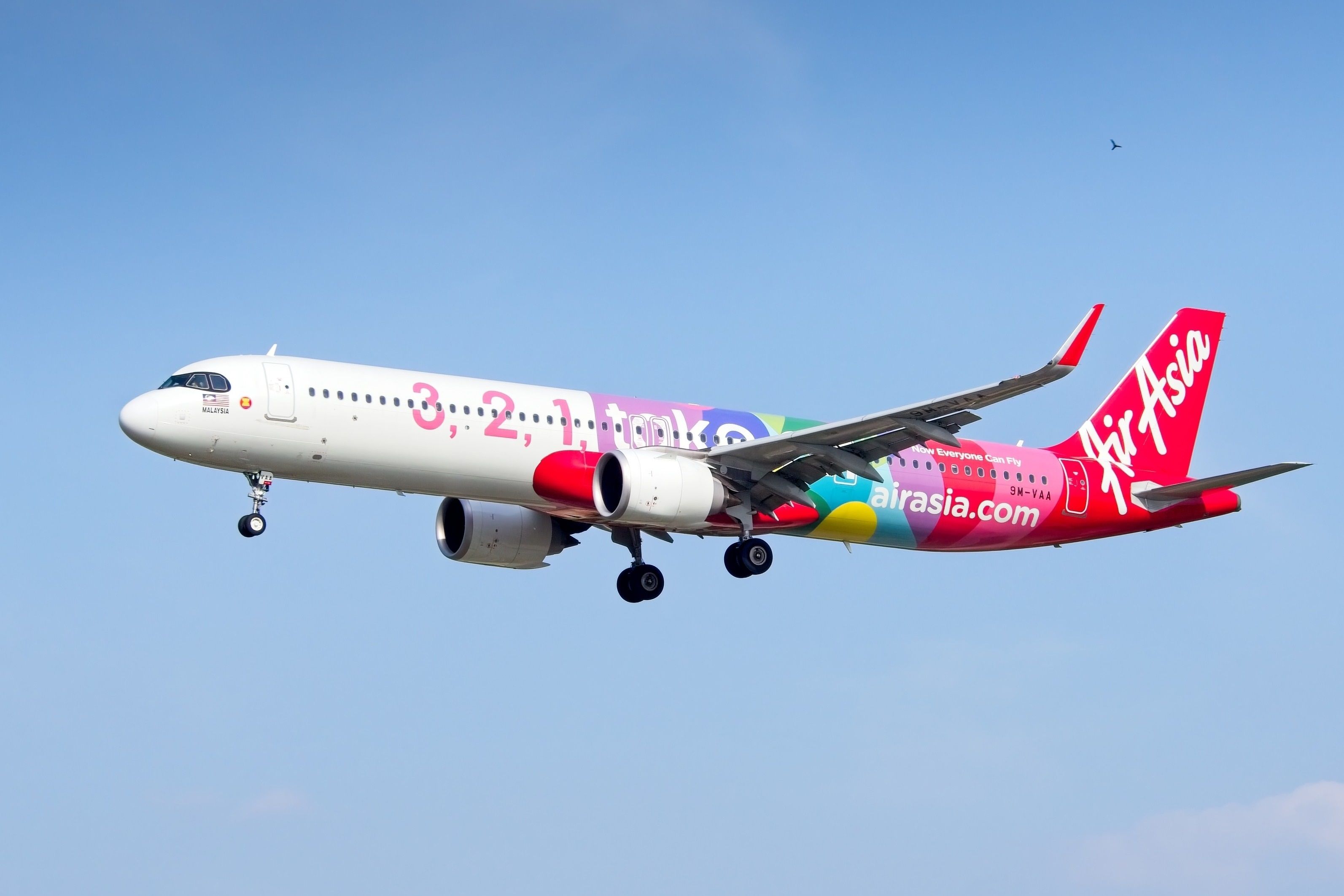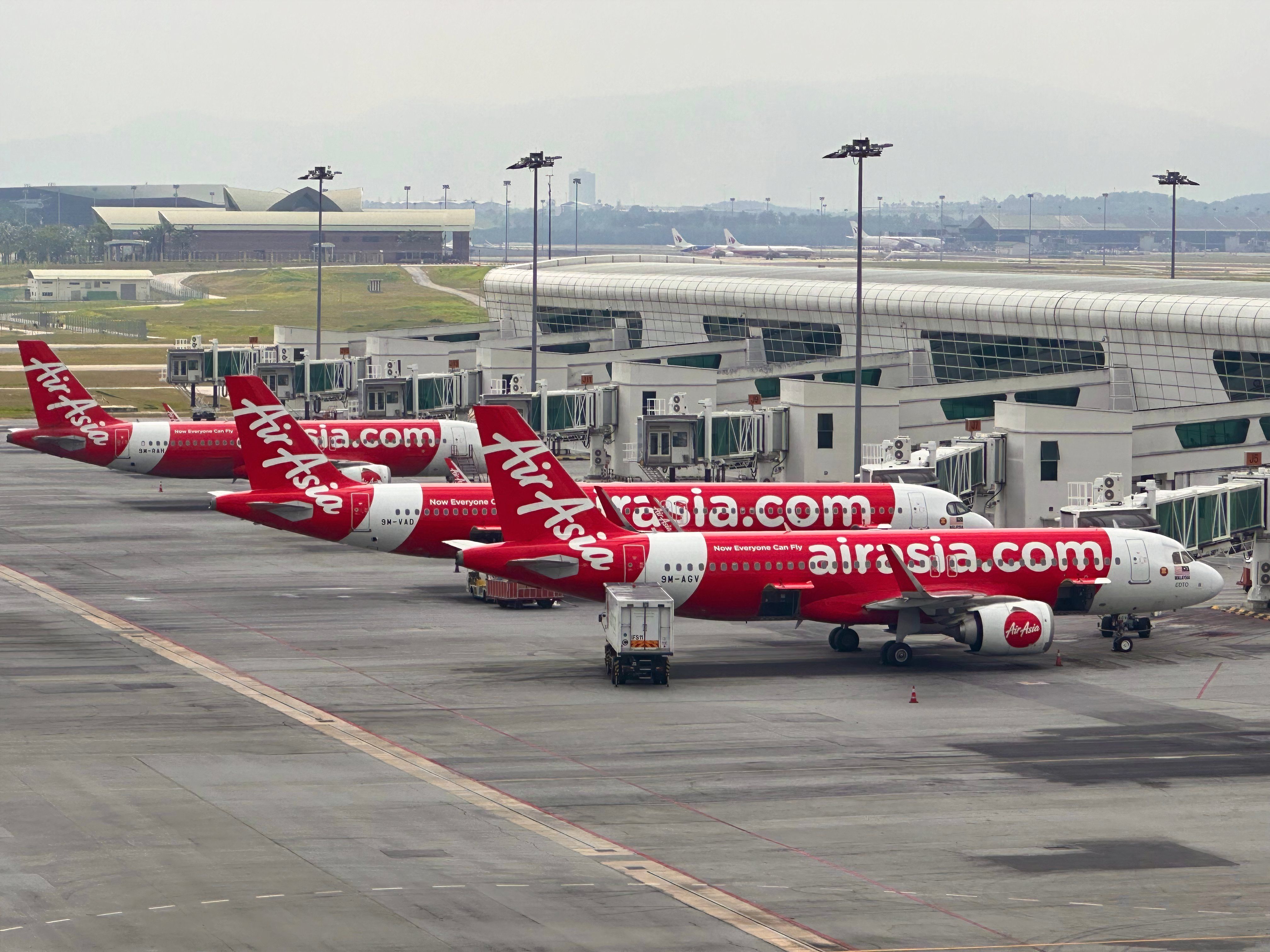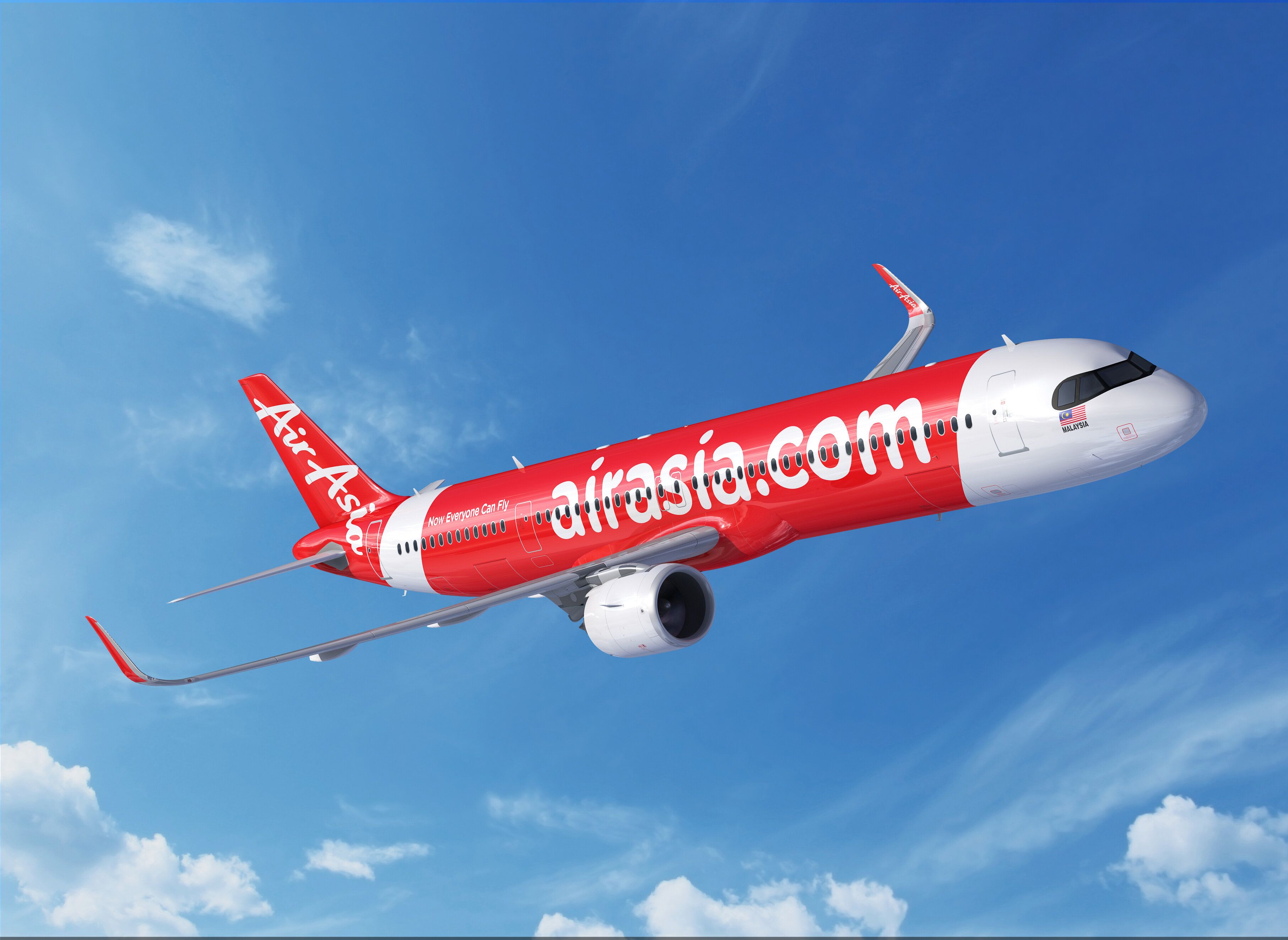AirAsia has announced that it will order 50 Airbus A321XLR aircraft, with conversion rights for 20 additional planes. This is part of a move by one of Asia’s most prolific low-cost carriers, with plans to expand its long-haul international network. As reported by ch-aviation, this is likely to be the first of two AirAsia orders for new aircraft, with a contract for up to 150 additional aircraft expected within the next month.
The utilization of long-haul narrowbody aircraft will allow the carrier to explore new long-haul routes, operating to more destinations than were feasible before. This move could see the carrier become one of the first long-haul, narrowbody network carriers.
Deliveries From 2028 To 2032
Currently, according to ch-aviation, AirAsia has eight A321neo aircraft, with an order for 323 additional planes over the next decade. These are configured with up to 236 passengers in a single-class configuration. Upon delivery of the long-range capable aircraft, could see the airline could build virtual hubs across the Middle East, Europe, and Eastern Asia, enabling simple one-stop itineraries across the globe.
Such examples, as explained by the airline’s CEO, could see Sharjah or Dubai open the doors for further destinations across the Middle East or Africa, or heading in the opposite direction, seeing the carrier operate fifth freedom services onwards to the United States via Japan. The carrier previously served Honolulu via Osaka’s Kansai International Airport. Tony Fernandes shared how the A321XLR could revolutionize the carrier’s long-haul network:
“A narrowbody obviously gives us a lot less risk in terms of certain routes, and allows us to go to many more destinations that we couldn’t have gone to before because the 380-seat [A330] aircraft would be limiting. So it’s really transformative. We believe we can build the first low-cost, narrowbody network carrier, and this aircraft order, with our existing aircraft, will allow us to comfortably do so.”
Increased Traffic Through Exiting Hubs
By 2030, AirAsia is aiming to transport more than 150 million guests annually, which would see the airline surpass 1.5 billion passengers since its first inception. The introduction of the A321XLR will support global expansion of its low-cost model, primarily from its major hubs at  Kuala Lumpur International Airport (KUL) and Bangkok Don Mueang (DMK).
Kuala Lumpur International Airport (KUL) and Bangkok Don Mueang (DMK).
The deal, estimated at $12.25 billion, will see airlines Airbus A321XLR operate with 20% lower fuel burn, while boosting the carrier’s operational efficiency, advancing the airline’s environmental goals to lower its carbon footprint, and also accelerating the carrier’s ambitious expansion plans. The game-changing capabilities for the Airbus narrow-body, long-range aircraft will see the Asean carrier be able to transport more people, to more destinations across the globe, with the airline suggesting that they are ‘proud to lead the change in making our world smaller.’
Suggestions by AirAsia would see that not only Kuala Lumpur and Bangkok benefit, but other hubs such as Jakarta and Manila also use the XLR to add more points to point destinations from secondary airports. Denpasar’s I Gusti Ngurah Rai International Airport (DPS), Penang International Airport (PEN), and Johor Bahru Senai International Airport (JHB) are high on the airlines’ expansion plans, with the XLR best suited to support point-to-point traffic from these popular tourist hotspots.
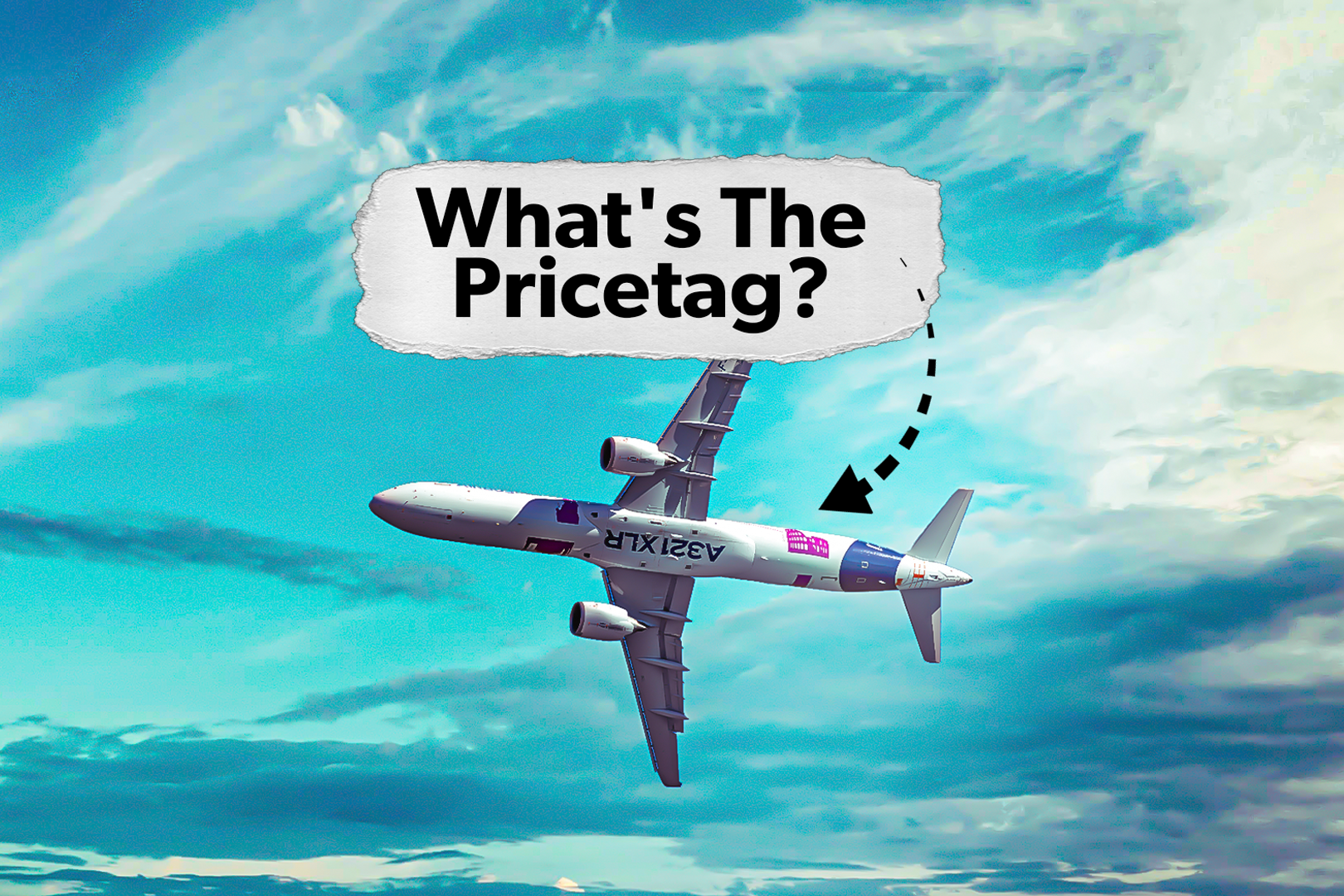
Related
How Much Does An Airbus A321XLR Cost?
The range and efficiency of the XLR commands a premium over other narrowbody aircraft currently on the market.
The Skies The Limit For AirAsia
Fernandes has confirmed that this latest order was an addition to its existing commitments with Airbus, with firm orders for more than 320 A321-200NX and 36 A321-200LR. The 20 conversion rights for the XLR will include aircraft already on order. Financing of the order is expected to be funded by additional bonds in the market, and will depend on interest rates in global markets. The carrier has suggested traditional financing via sale and leaseback, but could also be done through outright purchases or operating leases.
With the airline’s existing fleet of 27 A330-300s, under subsidiaries AirAsia X and Thai AirAsia X, the airline has confirmed that these are not ready for retirement, an that there could be consideration to redeploy these aircraft for Manila operations, with the capability to reach the US West Coast direct, something not achievable with the XLR.
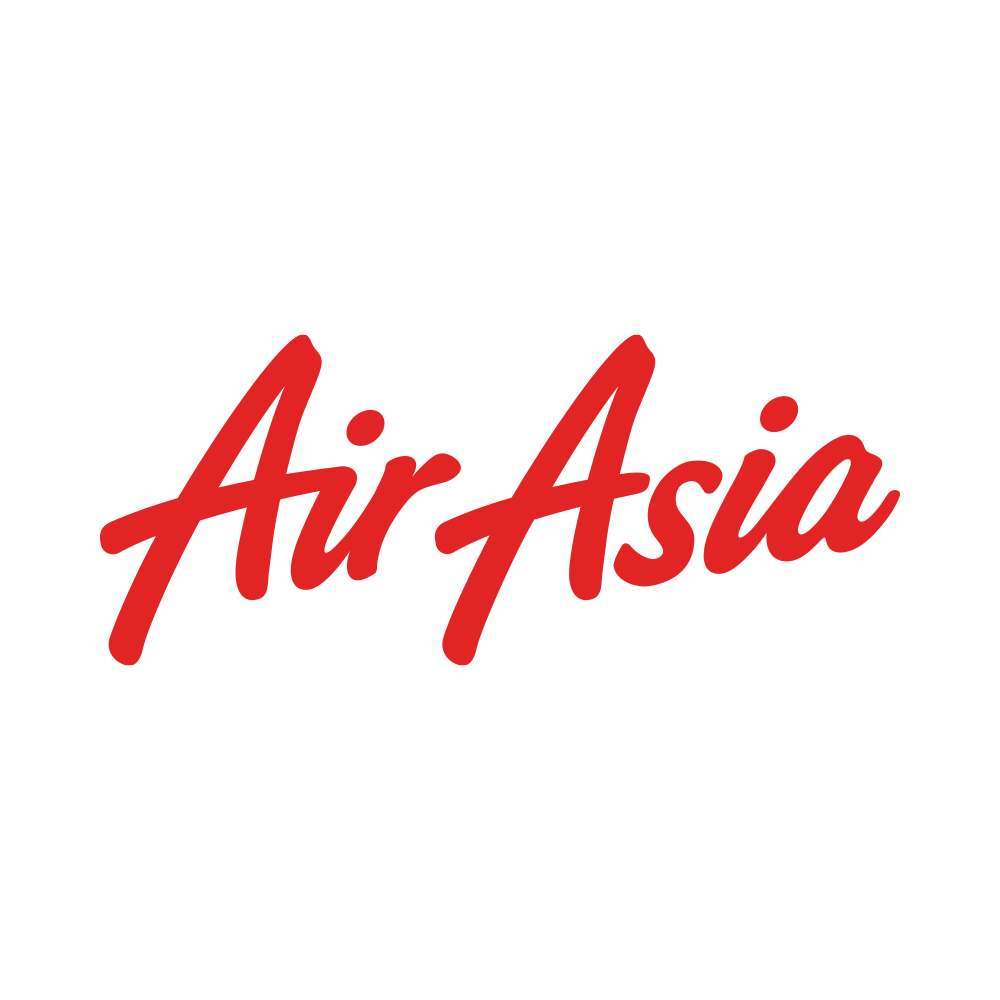
- Year Founded
-
1993
- CEO
-
Tony Fernandes
